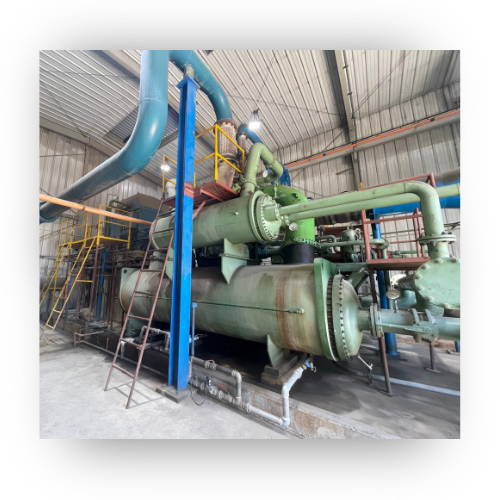CASE STUDY
Energy Efficiency in Compressed Air Systems
Adjustment of the start and stop sequence of a compressed air service compressor group

Summary
Compressed air is considered a «support» system, which often leads to it receiving less attention compared to production areas. However, generating compressed air can be one of the most energy-intensive operations in an industrial plant.
Compressed air is vital in industrial environments, used both for powering tools and equipment and in direct applications within production processes. Companies may have different configurations for their compressed air systems: a single compressor, multiple units feeding a supply ring, independent units serving specific areas, and more.
Initial Situation
Nuestro cliente tenía la particularidad de haber cambiado de un sistema de salas individuales ,con dos o tres equipos de compresores cada una, para servicios específicos a una integración de todos los equipos aportando a un anillo que suministra aire comprimido a toda la planta, lo que incluía tanto aire para procesos, aire para herramientas y aire para instrumentación.
Challenge
Reduce energy consumption per m³ of compressed air generated through no-investment energy efficiency measures.
Solution Suggested by EMMA
EMMA identified significant differences in air production efficiency among the various compressors, indicating that they were not configured to operate at maximum efficiency.
EMMA’s recommendation was to change the operation logic for starting and stopping the compressors, prioritizing the most efficient units to cover the base demand and adding others as needed.
Results
0,8% savings
Estimated Annual Savings : US$ 2.280
Required Investment: US$ 0
Return on Investment Period: Immediate
Energy source: Electricity
Type of Measure: Operational
The measure was implemented within the week following its identification in EMMA by the operations team.
To verify the result, EMMA’s verification module was used. This module determines the appropriate verification period based on IPMVP guidelines and compares actual energy consumption against the projected consumption from the predictive baseline model.





